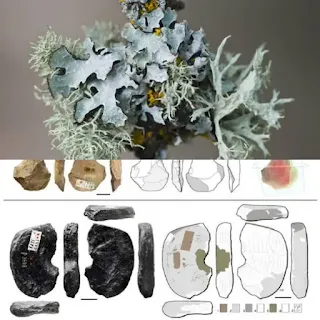Known for their remarkable resilience, lichens have proven their mettle in some of the harshest conditions on our planet and beyond, raising profound questions about the origins and spread of life in the universe.
Lichens (or lichens) are exotic organisms, a cross between microscopic green algae (or cyanobacteria) and filamentous fungi. The relationship between them is symbiotic (in symbiosis), where the algae carry out the process of photosynthesis and the fungus absorbs water and salts, thus achieving a balance in the collection of food between the two parties.
Although lichens tend to be unassuming to look at, they are so hardy that some can survive the harsh environment of space.
When the lichens were attached to the exterior of the International Space Station for 18 months, they survived the vacuum of space, the lack of water, extreme temperatures, and the full onslaught of radiation and ultraviolet light from the sun, and continued the process of photosynthesis.
Lichens preserved in a simulated Martian environment on Earth also survived and were active, raising the possibility of life on Mars, where the environment is extremely dry and cold, with low atmospheric pressure and radiation bombardment inhospitable to life as we know it.
In fact, lichens have been able to survive and even thrive in such conditions, showing resilience to radiation levels more than 12,000 times the lethal dose for humans, and continuing to photosynthesize, even though their reproduction can be harmed. In contrast, bacteria exposed to the same simulated conditions died during experiments on Earth.
These findings have raised speculation about lichens about their possible role in the “university” hypothesis, the hypothesis that the “seeds” of life are present throughout the universe, and that life on Earth may have come from those “seeds.” The results of the new study indicate that life spread through space through lichens found on meteorites, comets or asteroids.
As we continue to explore the universe, the story of lichen's survival against the odds serves as a beacon of the possibility of life beyond Earth.
Discovering traces of an ancient civilization in East Asia
Unearthed artifacts institute of Vertebrate Paleontology and Paleoanthropology (IVPP)
An international team of scientists from China, Australia, France, Spain and Germany have found traces of an ancient, advanced civilization that existed 45,000 years ago in East Asia.
Nature Ecology & Evolution magazine notes that archaeologists studied an excavation site in the Shiyou area in the Chinese province of Shaanxi. They discovered traces of a civilization dating back to the Upper Paleolithic era, which existed 45,000 years ago. It mastered the technology of making blades, spear and arrow heads, as well as the technology of transporting obsidian over long distances.
Researchers have dated three samples of animal bones that were found during the original excavations in 1963. Scientists have discovered traces of processing (cutting) by humans on these bones. Radiocarbon dating revealed that the age of the main layer of the Xiu civilization ranges between 45,800 and 43,200 years ago.
Analysis of fossils and wear of stone tools showed that representatives of the Shiyu civilization were horsemen (hunters on horseback) who hunted animals using arrows and spears.
Tags:
alien organisms
cyanobacteria
lichens
powerful life
science
space food
space life
space lifestyle





